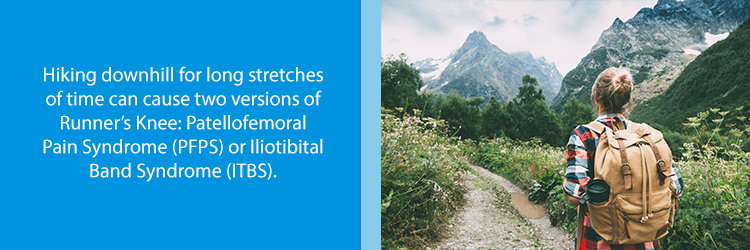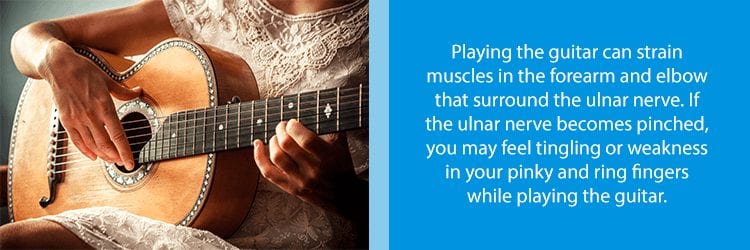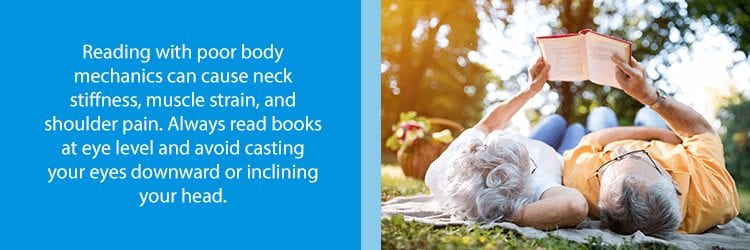If you suffer from neck, back, or joint pain, then trying to do the things you love can become frustrating. You don’t want to give up playing the guitar, gardening, or hiking in the Adirondacks… But, after about an hour of engaging in your favorite pastime, you’re cursing yourself for what must have been a temporary lapse in sanity. The good news is you don’t have to give up doing the things you love.
You just might need to modify how you do them.
Listed below we’ve outlined some beloved hobbies that can contribute to neck, back, or joint pain. We’ll explain how these cherished activities place strain on your spine and joints and what you can do to lessen the load on your bones.
Tennis & Tennis Elbow
Tennis elbow occurs when the tendons that connect to the outside of your humerus suffer from wear and tear. Because these tendons attach to a bony knob on the inside of your elbow known as the lateral epicondyle, doctors sometimes call this condition lateral epicondylitis.
These pesky tendons also attach to the extensor muscles in your forearm and wrist… Meaning, that backhand stroke that you’ve perfected over the course of many months? Now causes you excruciating pain. Both on and off the court!
If you have severe tennis elbow, then your doctor may recommend taking a short break from playing tennis. But, after about 1-2 weeks of rest, you can perform exercises to strengthen the extensor and flexor muscles of your forearm. (See our “At Home Treatments for Tennis Elbow” blog for sample exercises.)
Then, when you return to play, start slowly, making sure that you don’t overdo it. For example, begin by using only double-handed backhands and work on mastering your technique. For single-handed backhands, make sure that you are hitting the ball with a straight wrist. And, engage your shoulder and torso to maximize your return power. Also, consider wearing an elbow brace or buying a larger (not a heavier) racket. While it seems like a smaller racket would be easier on the wrists, larger rackets actually absorb more impact from the ball.

Golf & Golfer’s Elbow
Golfer’s elbow is pretty much the reverse of tennis elbow. Golfer’s elbow involves the tendons that connect the flexor muscles of your forearm to the medial epicondyle on the inside of your elbow. As such, this condition causes pain in the arms or hands when you’re swinging a golf club. Or, a gradual loss of hand strength that affects your ability to grip that 9 iron.
As with tennis elbow, your doctor may suggest that you take a brief break from golf if you have a particularly bad flare up.
When your doctor clears you for gentle exercise, you can begin by strengthening your wrist and forearm muscles. With your palm face up, for example, you can perform eccentric wrist flexion by gripping a light weight (<3 lbs) and flexing your wrist toward the sky. Or, you can practice squeezing a tennis ball to improve your grip strength.
To prevent golfer’s elbow while you play, keep your elbow straight while you’re swinging, but be careful not to lock it. The repetitive force of hitting the ball with a locked elbow is often what leads to this condition. Also, do not relax your wrists at any point during your downswing. Known as scooping or casting, this can jar your tendons. Lastly, consider wearing an elbow brace while your tendons are healing.
Running / Hiking & Runner’s Knee
When we talk about runner’s knee, we are actually discussing a broad class of disorders that cause pain along the kneecap. However, the two most common sources of runner’s knee are:
- Patellofemoral Pain Syndrome (PFPS): If you have PFPS, you may struggle to tell your doctor where your knee hurts… Because your entire knee feels inflamed! If you’re a hiker, runner, cycler, or even a desk jockey, then PFPS can cause you serious problems. Activities that require constant flexion of the knee (such as pedaling a bike or sitting at a desk) can lead to PFPS.
- Iliotibial Band Syndrome / IT Band Syndrome (ITBS): Especially common in women, ITBS causes pain on the outside of the knee. Because your IT Band runs from your hip to your knee, a lot of issues with the IT Band stem from flaws in hip anatomy. When you’re hiking downhill (whether you’re in the Appalachian Mountains or crossing over a small sea dune), the extra load on your knee from gravity can overstress the IT Band.
Knees tend to be a little bit trickier than elbows to treat, simply because our anatomy can be the problem. If you’re a runner, consider easing back into jogging by using an elliptical before pounding the pavement. Or, have your feet analyzed by an expert for supination (turning the foot outward) vs. pronation (dipping the foot inward) when you walk. Sometimes, simply upgrading your athletic shoes to match your running gait can make a world of difference.
If you’re an avid hiker, consider buying trekking poles to reduce the load on your knees or use a knee brace / kinesio tape to give your knee extra support.
And, if you have knee problems in general, consult with a PT to discuss the best exercises for strengthening your leg muscles.

Video Games & Carpal Tunnel Syndrome
Addicted to Call of Duty, Assassin’s Creed, or Fallout? Whether you game with a controller, mouse, or keyboard, your wrists are vulnerable to developing Carpal Tunnel Syndrome (CTS). CTS occurs when the median nerve at the base of your hand becomes pinched by the carpal bones that make up your wrist. This condition causes dull, arthritis-like pain in the wrist that can shoot into your middle and index fingers or thumb.
The quick-and-easy solution? Upgrade your hardware / gear to the latest ergonomic version of the original. For computers, consider using a vertical mouse (like the Anker 2.4 G Wireless Vertical Mouse or the Evoluent VerticalMouse). Or, invest in gel pads to support your wrists while you type and doubleclick.
If you play on a Nintendo switch, consider adding rubber hand grips to your Amazon cart next time that you check out. If you play Xbox One or PS4 Pro, then you’re in luck as these controllers were designed with ergonomics in mind.
That doesn’t mean that you won’t experience hand and wrist pain, however. Keep in mind wrist “posture” as you play: Be sure to keep your wrists straight–not locked or bent–as you game. Take regular breaks every 30 minutes, keep the blood flowing to your hands by keeping them warm, and ask your doctor about wearing wrist splints at night.
Playing Guitar & Cubital Tunnel Syndrome
Cubital tunnel syndrome doesn’t discriminate between professional guitar players or weekend rifters. But, it can bring your guitar playing to a screeching halt. Cubital tunnel syndrome occurs when the ulnar nerve (i.e. the funny bone) becomes pinched where it passes through the cubital tunnel. The cubital tunnel is a narrow passageway on the backside of your elbow where the ulnar nerve passes between bone and muscles (like the flexor carpi ulnaris).
If you develop cubital tunnel syndrome from guitar playing, you may experience:
- Elbow pain or muscle weakness in the hand
- That “funny bone sensation” in your ring or pinky fingers
- Inability to pinch your pinky and thumb together as you grip the guitar
- A general loss of hand grip strength
…These are all important things that you need in order to play the guitar!
Unfortunately, while you are healing, it’s recommended that you take a break from playing the guitar. When you return, you need to ease back into playing little by little, gradually upping the amount of time that you play each week. Before you play, you also need to warm up the 17 muscles of your hand and the 18 muscles of your forearm. Think elbow and wrist flexion and extension exercises, scales, arpeggios, and more! Even consider running your hands under warm water to get the blood flowing to your ring and pinky fingers before you play!
After you heal, work on building up the strength in these fingers by playing pieces that use the 4th and 5th fingers often. Massage your forearms before and after playing… And, even consider wearing an elbow brace at night. If you follow these simple steps, you’ll be back to jamming in no time!

Gardening & Lower Back Pain
Gardening is one much-loved hobby that is well-known to cause lower back pain. Whether you’re lifting heavy bags of potting soil, stooping over at the waist to plant flowers, or using a hoe to dig up weeds… you’ll need to protect your lumbar spine from unexpected injuries, like herniated discs or muscle tears.
Anyone who gardens knows this much: It can be a workout! And, every good workout should begin with an equally good warm-up and end with an equally good cool down. Don’t underestimate the power of dynamic stretching and a short burst of cardio before you begin tackling those hydrangeas! After you finish for the day, be sure to stretch the muscles that support your lower back, hips, and shoulders. (Stretching out the back can be as simple as completing a couple of leg lifts or holding a superman pose for 30 seconds. When it comes to stretching, 5 minutes goes a long way!)
When you lift heavy items in the garden (bags of mulch, potted flowers, etc.), make sure to lift with proper body mechanics. Don’t stoop over at your waist. But rather, fall into a squatting position and then lift by straightening out your knees. Better yet, avoid lifting altogether and use a wheelbarrow or dolly to move heavy equipment or planting materials from place to place.
Also, consider investing in long-handled gardening tools. You can find all of the typical tools, like spades and weeders, in long-handled versions that don’t require you to get down on your hands and knees. Your lumbar spine will thank you!
Reading & Neck Pain
Love reading books in dusty tomes or on your Kindle… but reading doesn’t seem to love you back? The stiff neck syndrome caused by reading occurs when we strain the muscles and ligaments that support our cervical spine.
Fortunately, the answer is easy: Fix your posture!
Invest in a sturdy chair with comfortable upper back support. You know you’ve found the right fit if you’re neither slouching backward nor slumped forward, but just slightly past vertical with your shoulders supported.
Keep your gaze forward without bending your head down as you skim the pages. To make accomplishing this even easier, purchase a reading stand to hold your book or kindle. There are even ergonomic reading stands that will hold your book in front of your face as you read in bed!
If you read on your computer (or use it excessively for work), consider buying an adjustable computer stand. These devices allow you to raise and lower the height of your computer as you work so you can stand or sit as you like.
And remember: the more you strengthen your shoulder muscles and enhance your neck flexibility, the better your outcomes will be in all facets of your life.
Not finding sufficient relief here or need help now? Contact one of our board-certified orthopedic experts at NJ Spine & Ortho! Our award-winning surgeons specialize in a variety of conditions that can lead to neck, back, or joint pain. For minimally invasive pain relief and cutting-edge diagnostics, contact our team of spine and joint experts today!


